
Tel: 551-580-4856 | Email: F.WINNIE.S@GMAIL.COM
Philadelphia-area median home prices have risen 48% in the last decade
Homes in the Philly metro area were more likely to sell above their listing price this August than in any August in the previous nine years.
By Michaelle Bond
9/28/2021
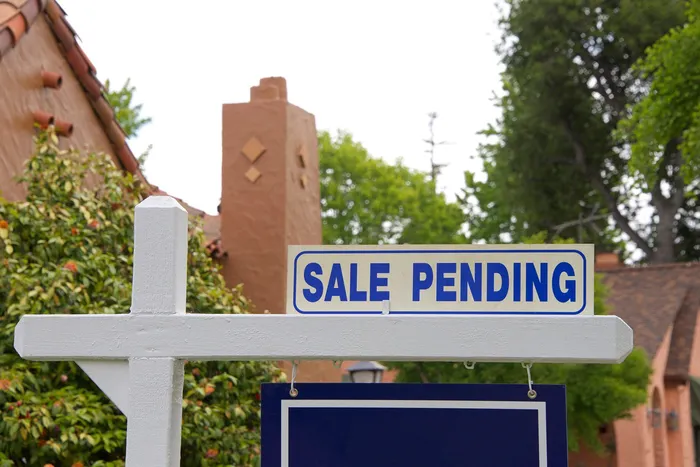
Realtor Brian Stetler recently sold two homes in Delaware County that he had helped his clients purchase a year and a half ago. The homeowners had made no improvements to the properties, but each sold for between $150,000 and $250,000 more than they paid.
Homes on busy streets, along train tracks, and next to the roar of I-76 and I-95 — properties that would have trouble selling in years past — are selling quickly, he said. Stetler, an agent with Berkshire Hathaway HomeServices Fox & Roach Realtors based in Society Hill, lists homes for sale midweek, and by the following Monday, he’s reviewing offers with his sellers. August has been unusually busy.
“We’re in unprecedented territory,” he said.
But even before the pandemic helped push the housing market into overdrive, sales and prices had been on an upswing in the Philadelphia region and across the country since the return of the market following the Great Recession. Pending home sales in the Philadelphia metropolitan area in the month of August shot up from about 8,400 in 2012 to more than 15,500 in 2021, according to the multiple listing service Bright MLS. The region’s mediansale price jumped more than $100,000.
More Home Sales Pending
In the Philadelphia metropolitan area, pending home sales increased from almost 8,400 in Aug. 2012 to more than 15,500 in Aug. 2021. Pending home sales are those in which a contract has been signed, but the transaction has not closed.
“The last decade has really been this very strong housing market,” said Lisa Sturtevant, Bright MLS economist adviser and chief economist at the Virginia Association of Realtors.
During that time, more of the large millennial generation moved into their prime home-buying years, driving up demand. Low mortgage rates over the last decade also have made homes more affordable and enticed buyers. The 30-year fixed mortgage rate averaged 3.66% in 2012, according to the government-sponsored mortgage financier Freddie Mac. That rate — historically low at the time — has dropped further over the last decade. The average rate in 2021 so far is 2.92%.
Over the last 10 years, metropolitan areas across the country, including Philadelphia, have seen “pretty dramatic price growth,” Sturtevant said. From August 2012 to August 2021, the median sale price in the Philadelphia region jumped about 48% — from $220,000 to $325,000, according to Bright MLS. That’s good news for homeowners who have held on to their properties. It’s a challenge for aspiring home buyers whose wages haven’t kept pace and who don’t have funds from prior home sales.
Median Sale Price Sees Dramatic Growth
Median sale price in the Philadelphia region increased from $220,000 in Aug. 2012 to $325,000 in Aug. 2021.
Home seekers from New York City and Washington who can work from home have looked to the Philadelphia region for homes that are relatively more affordable. The Philadelphia metropolitan area includes the city, its collar counties in Pennsylvania and New Jersey, and Kent and New Castle Counties in Delaware.
Although the rate of price growth has been slowing in recent weeks, homes were more likely to sell above their listing price this August than in any August in the previous nine years, according to Bright MLS. The Philadelphia area’s median home price was up more than 25% last month compared with August 2019. Some people may look at the price increases and fear another housing bubble, but red flags such as risky home loans aren’t driving housing market growth.
“The strength of the Philadelphia housing market is being driven by really sound fundamentals,” Sturtevant said. “It’s a strong market that’s very different than our last very strong market.”
Stetler said it’s hard to predict what the near future will bring. But, he said, “we do know the prices aren’t going down anytime soon. Because there’s no availability.”
Months of Supply
Housing inventory has decreased significantly in the Philadelphia region. In Aug. 2012, there was more than 9 months’ worth of housing supply. As of last month, the region’s supply is under 2 months.
Builders constructed too many homes in many places ahead of the Great Recession and overcorrected and built too few homes in the years after, said Sheharyar Bokhari, senior economist at Redfin. The pace of home construction over the last decade has not kept up with growing demand. Homeowners are staying in their homes longer, and more older residents are aging in place, which means fewer homes on the market. Earlier in the pandemic, supply-chain disruptions and the skyrocketing prices of building materials hindered builders, who are still facing worker shortages.
The supply of homes on the market remains at a historical low. In August 2012, the Philadelphia region had more than nine months’ worth of housing supply — the time it would take for homes on the market to sell. Last month, the region’s supply stood at less than six weeks.
Inadequate housing supply restricts market activity, but over the next few months, Bokhari said, “the market is still going to be strong.”
During the pandemic, some home seekers were able to save money, and they used those savings to purchase houses. Over the rest of this year and next year, the economy should continue to improve and bring more people financial stability, which should keep the market strong, Sturtevant said.
A cooling of what has been a frenzied market will follow, she said, and, in a year or two, the market may become more balanced.
Frustrated House Hunters Are Giving up on Buying Only to Face an Expensive Rental Market
By Aly J. Yale
9/22/2021

Cramped in a one-bedroom, new parents Kristina and David Mahon were desperate to buy a larger home. But after scouring the Pompano Beach, Florida market for nearly a year (and losing out on 20 houses in the process), the pair eventually gave up.
Now, the couple — with a 10-month old baby in tow, no less — are renting, a decision Kristina says they felt “forced” into.
“I feel like I’m wasting money for something that’s not mine,” Kristina says. The rental“options were very limited, and the prices were on the high side of what we were comfortable spending on a rental.”
The Mahons’ is a common storyline these days, according to those in the industry. Burned-out house hunters are tired of bidding wars, rising prices and dwindling options and are bowing out of the purchase market, opting to rent instead.
“It’s common given the current market and environment that we are in,” says Kaley Tuning, the Native Realty agent who worked with the Mahons. “It just becomes frustrating for the everyday buyer. I’ve had buyers bid upwards of $40,000 over asking price and still get outbid.”
Unfortunately, the pivot to renting isn’t always easy. While the move may afford frustrated buyers time to wait out the competitive housing market, it often means entering an equally hot rental scene — one where rising rents and dwindling supply are growing concerns.
According to Realtor.com, median national rents grew a whopping 11.5% between August 2020 and August 2021. And rent applications? Those are up as much as 95% in some cities, according to apartment listing platform RentCafe.
For hopeful homeowners, it’s made for a unique catch-22 that’s as frustrating as it is costly.
Rents are on the rise
It’s no secret the housing market’s been hot this year. The purchase market has boomed in nearly every corner of the nation since last spring. Home prices are up 17% over the year, and inventory, while improving, is still near record lows.
The rental picture has been more mixed, though. At the start of the pandemic, vacancies in big cities rose and prices dropped, while demand for suburban rentals skyrocketed. Now, rents are bouncing back across the country, reaching well above pre-pandemic levels in many areas.
According to Realtor.com, the typical rent now clocks in at $1,633 per month — $169 more than this time last year and almost $200 more than 2019’s numbers. And in nearly half of the country’s biggest cities? Monthly starter home payments are more affordable than average rents.
The hot housing market has a lot to do with this spike in rent costs. With rising home prices and limited for-sale listings, more and more buyers are stepping back. This puts pressure on rental inventory and drives up rents.
As Lisa Harris, an agent at RE/MAX Center in Braselton, Georgia, explains, “Fewer homes listed for sale and much higher prices for them have kept many want-to-be buyers in their rental units, taxing the rental supply.”
The pandemic plays a role, too. Eviction bans have kept many non-paying renters in place, tying up units for much of the last year. While the CDC’s eviction moratorium was shot down late last month, the experience has made many landlords warier than ever.
“Not only have the prices increased, but the demand on tenant screening seems to be getting much more stringent,” Harris says. “Landlords are seeking tenants with higher credit scores, higher deposits, no pets, a clean criminal history and more.”
The trickle-down of higher rents
Alex Lashner, like the Mahons, has experienced the difficult rental market firsthand. She even had to expand her rental search to account for price increases and is now looking as far as 90 minutes from her office just to stay on budget.
“I’m hoping it will be a short-term sacrifice so I can buy closer to my workplace a few years down the line,” she says.
Lashner was originally looking to buy her first home somewhere in Bucks County, Pennsylvania, but due to the competitiveness of the market — and her refusal to waive contingencies or overpay (as many buyers are forced to do lately), she lost out on every property she bid on. She finally opted to rent, only to find rising prices there, too.
“I’m frustrated that buying a three-bedroom home in my budget is cheaper than renting when you compare the monthly costs of a mortgage, property taxes and HOA fees versus the rental costs for a two-bedroom or even a one-bedroom apartment,” Lashner says. “That’s where my real sticker shock is.”
Rising rents are more than just a budgetary strain for hopeful buyers, though. They also make it harder to save, which could push back those homebuying goals even further. The Mahons are one household in that camp, something Kristina calls “frustrating.”
“Instead of us paying down our own mortgage and building equity, we are paying someone else’s mortgage,” she says. “For the next year or as long as we are renting, we will not be able to save as much as we had hoped.”
Buyers who are forced to sign long-term leases have another dilemma, too: What if mortgage rates go up?
Interest rates have been hovering near historic lows for months now and have played a major role in boosting buyer demand. Kristi Nowrouzi, a mortgage loan officer with Geneva Financial, says many buyers who have backed out of the market recently are concerned those conditions could change.
“There’s a fear of missing out on the low-interest-rate environment,” Nowrouzi says. “Inflation is blowing up and who knows what rates will look like next year at the end of an annual lease agreement.”
What’s the solution?
One option for buyers facing sky-high rents is to opt for a month-to-month lease. The flexibility usually comes with a slightly higher monthly rent, but it ensures you can act quickly should the right house hit the market.
“By doing a month-to-month lease, even though rent might be slightly higher than signing a long-term lease, they can be ready to take action,” says Shmuel Shayowitz, president and chief lending officer at Approved Funding, a mortgage lender in New Jersey. “They can also continue to actively look for homes and, even if pricing doesn’t soften, be in a better position to act.”
Fortunately, strategies like this might not be necessary for long. Buyers still face plenty of challenges, but recent data points to growing housing supply — particularly in the starter home segment. Existing home sales have also slowed, falling 2% in August, and price growth has decelerated as well. According to Realtor.com, 17% of all listings had price reductions in August.
“The market is absolutely shifting now, and prices are decreasing a bit and sellers aren’t getting as high price per square feet as they were a few months ago,” Nowrouzi says.
A completely cooled-off market, though? That could be a long way in the future. Until then, Tuning says, “Patience is a virtue.”
为解住严重宅荒 美联邦政府要盖10万户平价宅
来源:经济日报
9/02/2021
在美国房价持续高涨之际,白宫官员表示,美国政府为纾解严重住宅荒,将采取一系列立即可实施的步骤,以现有经费和权力,在未来三年兴建、销售10万户平价住宅。
路透引述官员说法报导,这套计划最快1日宣布,将聚焦于扩大对个人和非营利机构销售房屋,同时对大型投资人买房设限。第2季全美各地每售出六户住宅,就有一户被投资大户买走。
美国房屋需求在新冠肺炎疫情爆发初期激增,反映民众为居家办公和学习购置更宽敞的房子。但待售屋不足和供应链瓶颈把房价推得更高,租金行情跟着水涨船高,加重家庭财务负担。白宫官员说,全美平价住宅估计短缺多达400万户。
白宫官员表示,美国总统拜登(专题)已提议,斥资逾3,000亿美元增建200万户平价住宅,这项措施是3.5兆美元基础建设投资案的一部分,正在国会审议中。但拜登希望推动立即可行步骤。
这套新计划将涵盖乡村与都会地区的住宅建案,重点摆在平价房市,希望能协助房屋自有率偏低的有色人种族群。
此计划将由美国住宅与都市发展部(HUB)部长法吉(Marcia Fudge)宣布,具体行动由该部、财政部及房贷机构房利美(Fannie Mae)与房地美(Freddie Mae)等联邦监管机构共同规划。“两房”合计占全美11兆美元房贷市场的一半。其中,一大关键步骤是重启曾由财政部与HUB合办但在2019年结束的“风险分摊计划”,该计划让各州住宅金融机构能扩大提供低利贷款,促进兴建平价住宅。
此计划也将提高组合屋及二至四户多户型不动产的供应量,希望透过房地美扩大融资达成目标。同时也将采取行动,限制对大型投资人销售一些由联邦住宅管理局(FHA)提供担保的不动产。
拜登政府另打算与各州和地方政府合作运用现有联邦资金,并协助减少排他性分区(exclusionary zoning)等阻挠提高住宅供应量的做法。
White House tackles housing shortage with plan for 100,000 affordable homes
By Andrea Shalal
9/02/2021
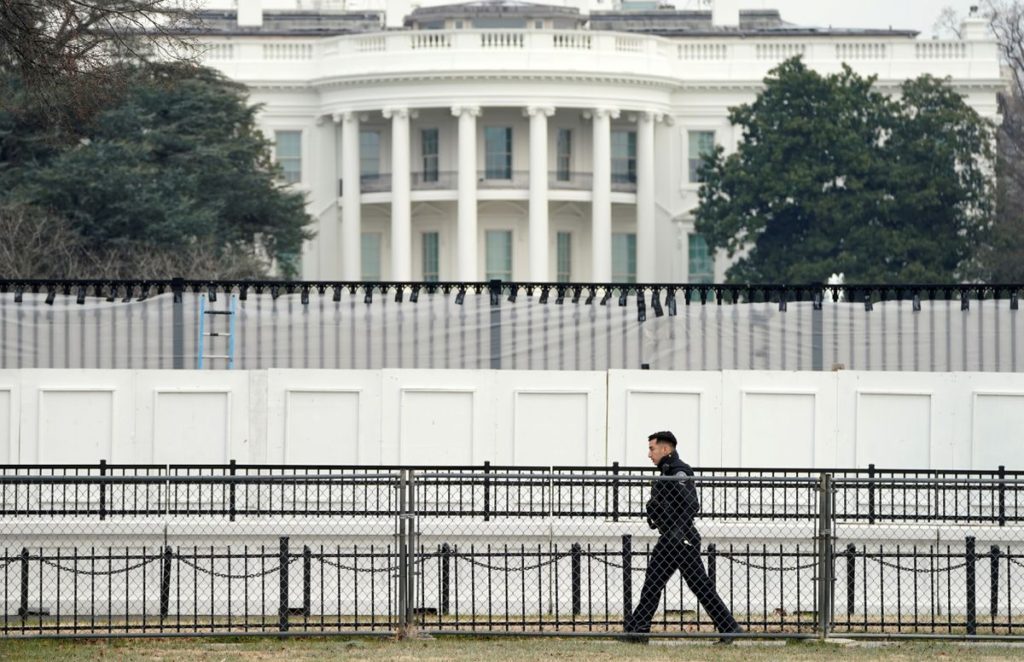
WASHINGTON, Aug 31 (Reuters) – The Biden administration is taking steps to address a severe housing shortage in the United States by creating and selling 100,000 affordable homes over the next three years using existing funds, the White House said on Wednesday.
The moves will focus on boosting home sales to individuals and non-profit organizations, while limiting sales to large investors, who scooped up one in six homes sold in the second quarter, according to a White House statement.
Demand for housing soared early in the pandemic as Americans sought more spacious accommodations for home offices and home schooling, but a shortage of homes for sale and supply chain bottlenecks have driven housing prices sharply higher.
Rental prices, which typically follow the lead of house prices, are also a big concern, given that even before the pandemic 11 million families – or nearly a quarter of all renters – were already spending more than half their income on rent, according to the White House.
The United States has an estimated shortage of as many as 4 million affordable housing units, White House officials say.
U.S. President Joe Biden has proposed spending over $300 billion to add 2 million more affordable housing units as part of a $3.5 trillion investment package being considered by Congress, but wanted to push forward with immediate steps that could be taken now, the White House said.
The plans will cover rural and urban housing projects, with a focus on aiding communities of color, where home ownership rates have lagged historically.
U.S. Housing and Urban Development (HUD) Secretary Marcia Fudge will announce the measures after touring a new five-story affordable housing complex in Philadelphia on Wednesday.
Fudge called the initiatives “significant downpayment” on Biden’s commitment to boost the supply of affordable rental housing, expanding access to capital for state Housing Finance Agencies, empowering local communities to build more affordable housing and promoting equitable housing policies.
Specific actions are planned by Fudge’s department, the U.S. Treasury and agencies such as Fannie Mae and Freddie Mac, which will increase financing opportunities to enable more Americans to purchase homes, the White House said.
One key step is the revival of a joint Treasury-HUD “Risk Sharing Program” that ended in 2019 and that will enable state housing financing agencies to provide more low-cost capital for affordable housing development.
The plans will also boost the supply of manufactured housing and 2-4 unit properties by expanding financing through Freddie Mac, while taking steps to limit the sale of some U.S. Federal Housing Administration-insured properties to large investors.
Investor purchases, which have been as high as one in every four homes in some communities, have driven up prices for lower-cost houses and triggered fierce competition for starter homes, the White House said.
The administration also plans to work with state and local governments to leverage existing federal funds, and help reduce exclusionary zoning and other practices that have discouraged efforts to boost the supply of housing, the official said.
The Federal Housing Finance Agency “will begin to study the interaction between exclusionary zoning and our regulated entities,” said acting Director Sandra L. Thompson.
如何计算一个投资房产的租金回报率?
By Willy Rong
3/07/2021
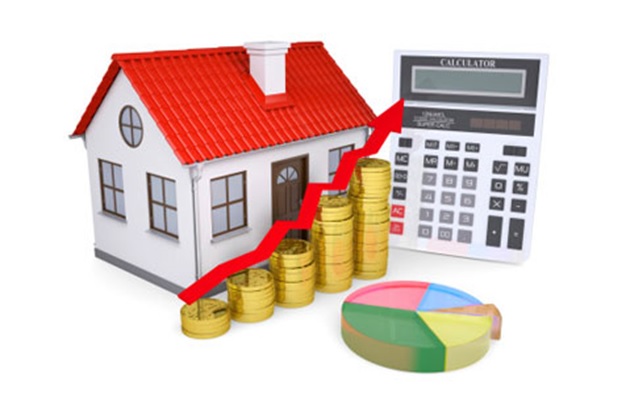
一直以来都有人问我,如何计算一个投资房产的租金回报率?我答过,但总是似是而非。
今天就这个问题给出我的计算公式Return Of Investment (ROI),仅供大家参考。
这个问题要从两方面讨论,看你是全额现金买房?还是贷款80% 买房?
(全额现金买投资房产)租金回报率 = (12月的租金 – 一年的各种花费)/ 买房价
(贷款80%买投资房产)租金回报率 = (12月的租金 – 一年的各种花费和贷款 )/ (
20%首付+ Closing Cost )
我们还是以一个$38万美元买房实例来计算,比较直观:
房子开支预算:
HOA $38/月; 保险 $120/月; 税 $356/月; 维修 $100/月。
共计 $614。
贷款 80%, 约每月还贷$1500;
租金每月$2350;去掉开支 $614; 每月净收入 $1736;
一年的总收入 $20832。
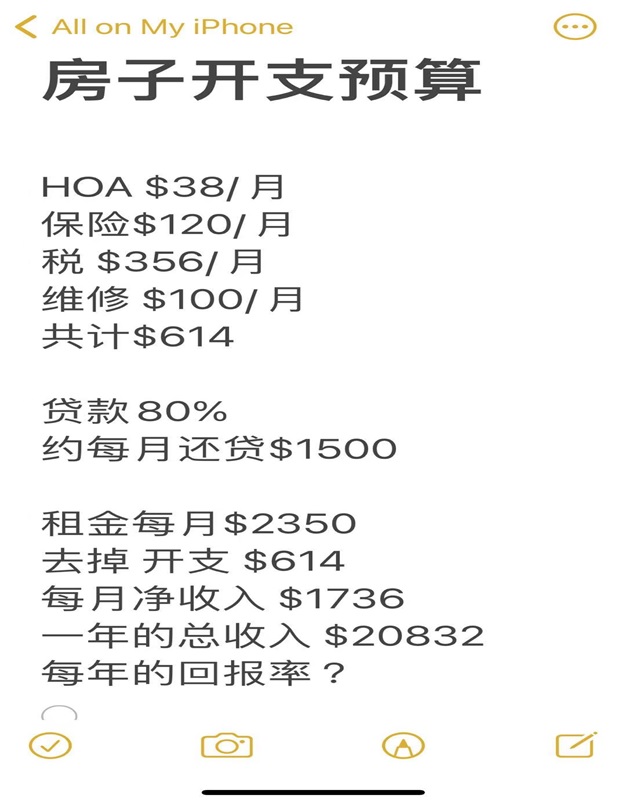
问:一个$38万美元的房产,每年的回报率?
(全额现金买投资房产)租金回报率 = (12月的租金 – 一年的各种花费)/ 买房价
$38万美元房子的租金回报率 = 一年的总收入 $20832 / 买房价$380,000 = $0.0548
全额现金$38万美元房子的租金回报率一年约为:5.5%;
(贷款80%买投资房产)租金回报率 = (12月的租金 – 一年的各种花费和贷款 ) / (
20%买房首付 + Closing Cost)
$38万美元贷款80%房子的租金回报率 = (一年的总收入$20832 – $18000) / (首付 $
76000 + $5000 Closing Cost ) = $0.0349
$38万美元贷款80%买投资房产的租金回报率一年约为:3.5%.
这个$38万美元的房子在最好学区,房子升值潜力大!
考虑到加上房子产权equity 上涨的因素,一年在6%-8%。所以要加上一个Equity 增值
率,换句话说,是用$81000 买了一个$38万美元的房产,是用杠杆买的房子。
这里有2个概念:一个是租金回报率;一个是Equity 回报率;
利用杠杆买房,就要让银行在这个房子上也赚一些钱,所以贷款租金回报率3.5%.要低
于全额现金租金回报率5.5%,这个逻辑是对的,那个2% 回报率的差让银行赚去了。
什么是智慧?智慧就是解决问题的能力!
能够把一个复杂问题简单化,用直白的方式讲清楚,这也是智慧。
现在亚特兰大地区(佐治亚),一个房子的租金回报率大概在3% ~ 6%左右,真心话,
投资房净租金回报率6%是一个不错的回报。
你若嫌上面二手房一年的租金回报率还低,你可以全现金买126包租5年的项目,一年的
租金回报率为净6%。
下面是在网上找到的租金回报率计算器,大家可以去练习:
租金回报率
https://www.calkoo.com/zh/zujin-huibao-lu
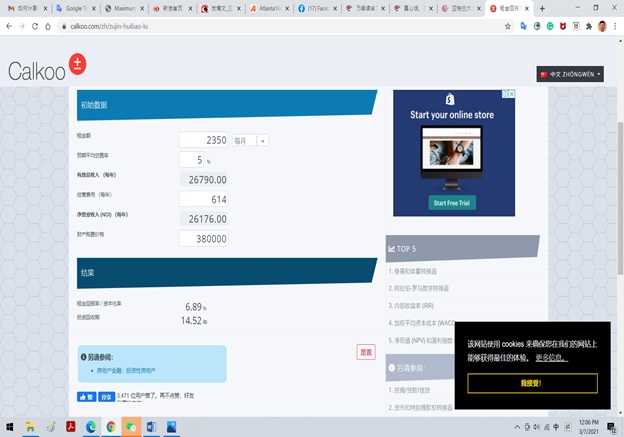
提示:算大账不算小账,可能公式不够严谨,但逻辑是对的。
Source: http://www.mitbbs.com/article_t/Georgia/31320547.html
Six Spaces Home Staging
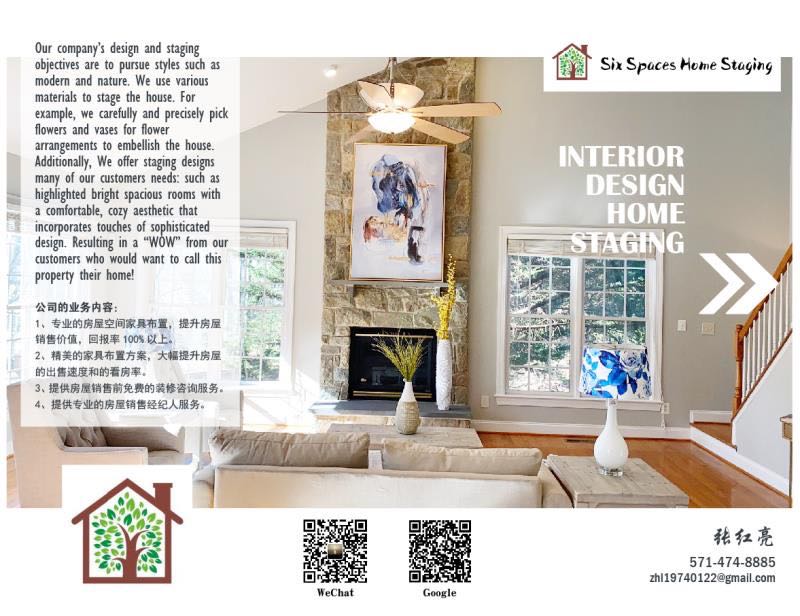
Contact: Hongliang Zhang
Tel: 571-474-8885
Email: zhl19740122@gmail.com



